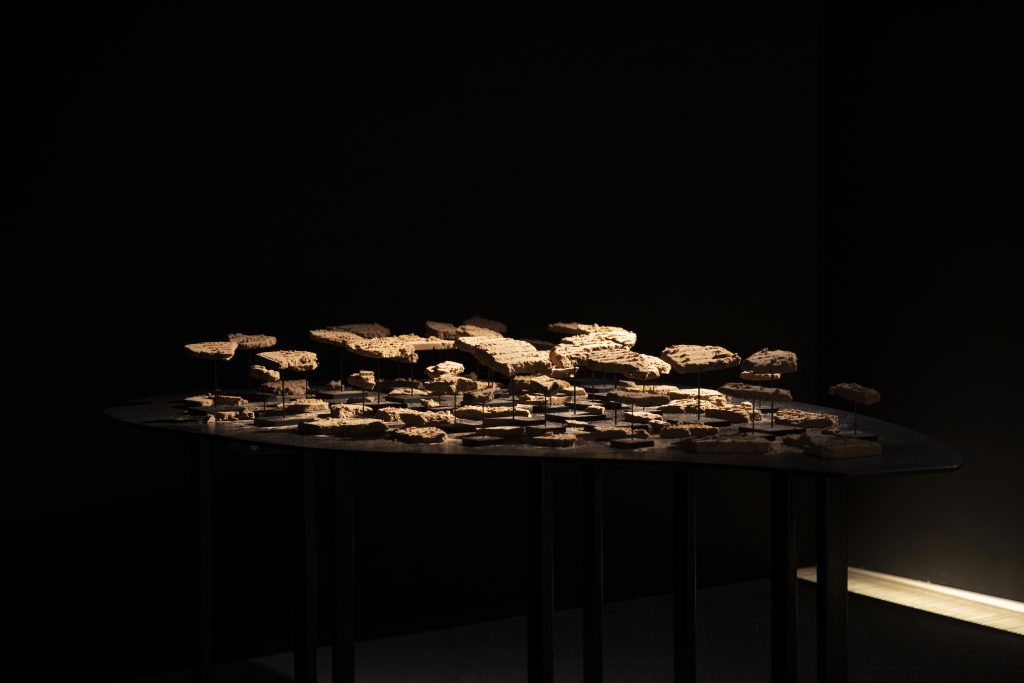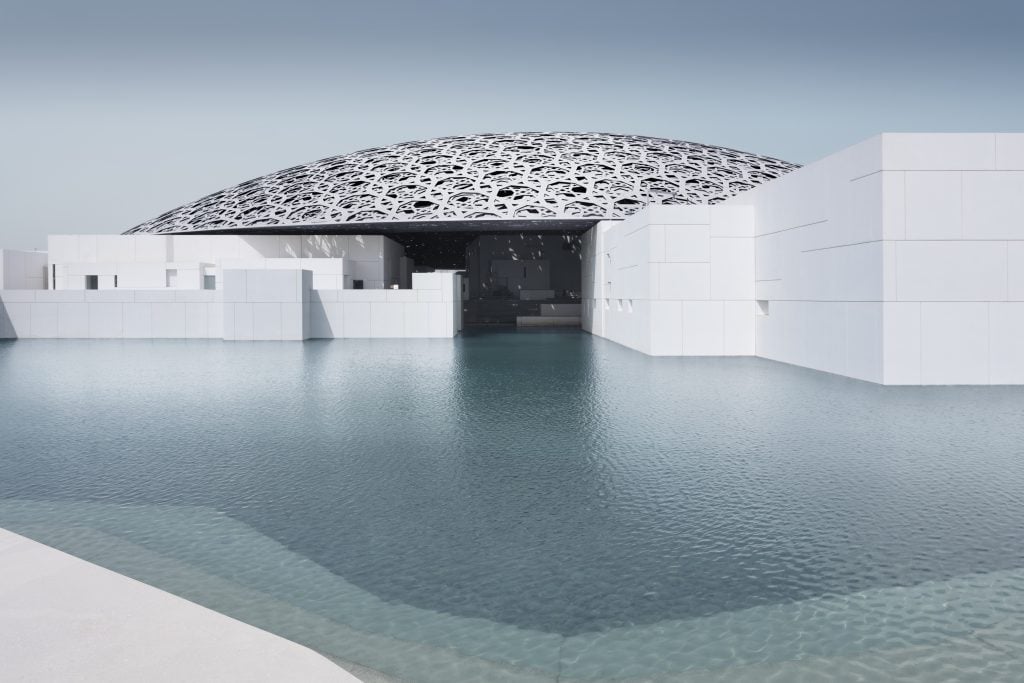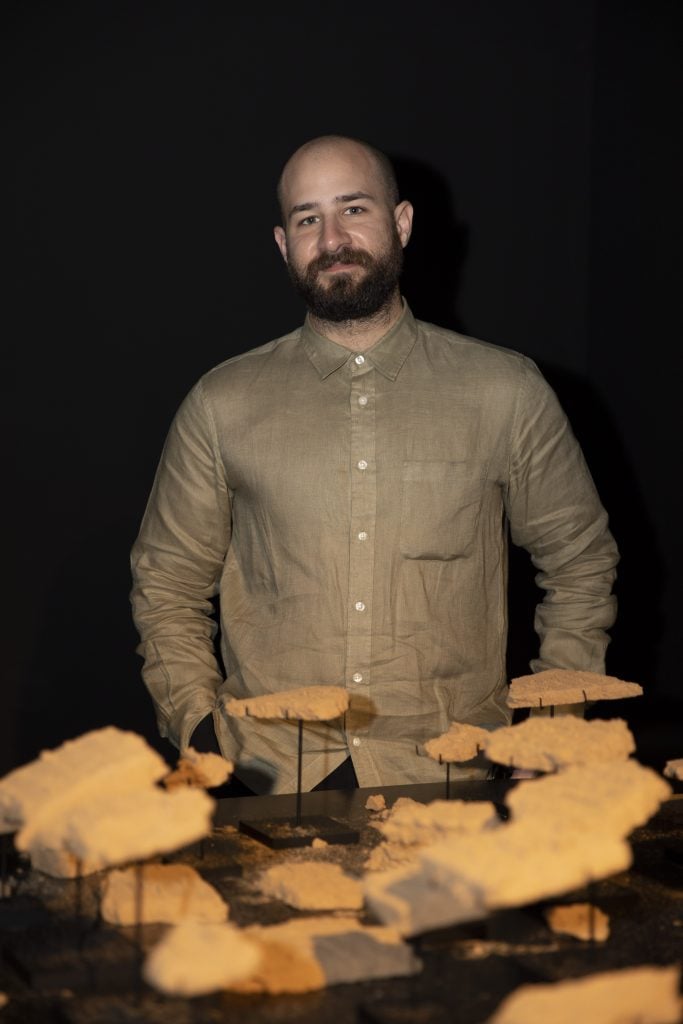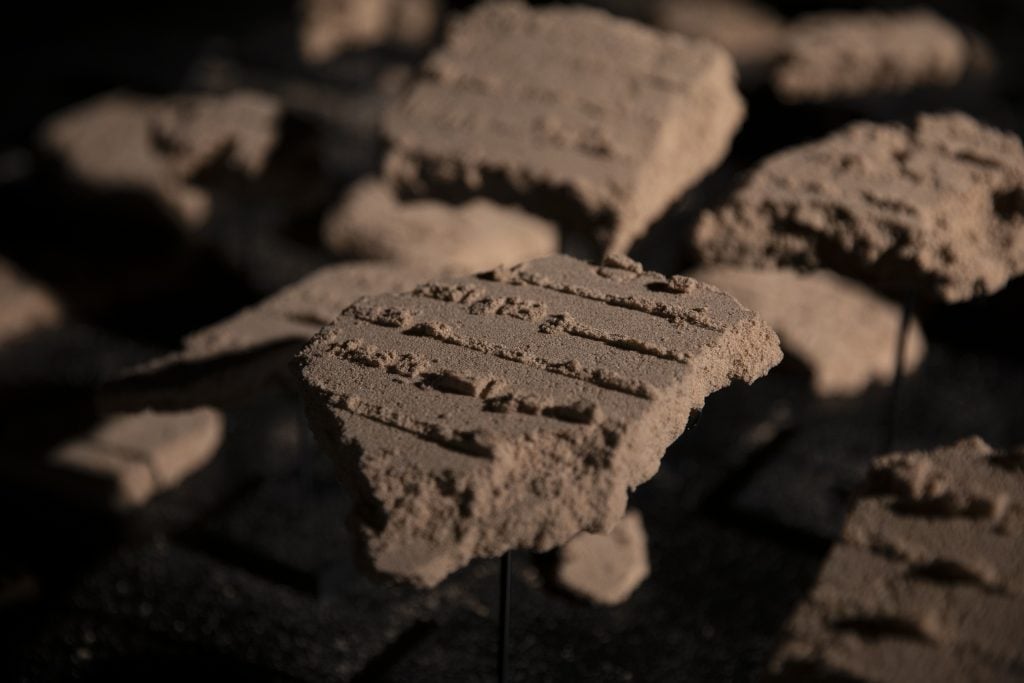On recent display at the Louvre Abu Dhabi was a selection of fragmented tablets. Arabic script of a Bahraini poem was carved upon them. Sculpted from sand, they exuded the aura of eons.
In fact, they were crumbling ever-so-slowly, right in front of the attendees’ eyes.
But this wasn’t a tragic loss of precious antiquities, and the tablets weren’t housed among the institution’s historic acquisitions. They are part of Nasser Alzayani’s “Watering the distant, deserting the near” series, and they’re meant to disintegrate.
“Sand is a poetic material to work with,” the 31-year-old Bahraini-American artist said from his home in Abu Dhabi this week.

Nasser Alzayani, “Watering the distant, deserting the near.” Photo by Xavier Ansart, courtesy of Richard Mille.
He continued, “I have no formal training, but I try to use archeological methods to add legitimacy to the objects that I’m creating—to draw people in and give the stories importance. I’m interested in using the language of artifacts to create fictional and truthful narratives, and also to shift perspectives and tell stories from a different angle, or not the established narrative.”
In March, Alzayani won the inaugural Richard Mille Art Prize, the luxury watchmaker’s $50,000 award eligible to UAE and Emirati-based artists. “An immeasurable amount of creative talent exists in the Middle East,” said Peter Harrison, the company’s CEO.
Richard Mille’s relationship with the museum will extend for at least ten more years. “Our partnership enables both brands to come together and offer recognition to artists in the region as well as a platform from which to share their art with the world,” Harrison said.

The Louvre Abu Dhabi. Photo by Mohamed Somji.
Seven shortlisted artists showed works at the Louvre Abu Dhabi Art Here 2021 exhibition—“Memory, Time, and Territory”—which closed last week. The theme was particularly redolent in Alzayani’s piece, which is part of an ongoing series that he began in 2015, while working on his MFA at the Rhode Island School of Design.
“Watering the distant, deserting the near” is centered around the natural spring of Adhari, near the artist’s childhood home in Bahrain. It has since gone dry.
“It really began with this memory that I had of visiting this place,” Alzayani said, “and it stuck out because this place didn’t exist anymore. My research started in trying to figure out whether this memory was real or not, because I had no evidence that proves that I had ever been there.”
The island country used to have over thirty natural springs; most of them have dried up in the last 50 years. “It’s mostly human factors—a rapid increase in population and overuse of resources,” Alzayani explained. “Then there’s the destabilization of the water table due to drilling for oil.”

Artist Nasser Alzayani with his Richard Mille Art Prize-winning work. Photo by Xavier Ansart, courtesy of Richard Mille.
The series also includes interviews with people who have visited the springs. As Alzayani explained, “The truth is one perspective, depending who is putting these objects on display and writing the descriptions, and on the framework from which people gain this information.”
He added, “Museums and archeology are a huge part of nation building and creating narratives.” They don’t just display history—they use objects to tell a version of it.
Alzayani is currently preparing for a 2023 group exhibition at Warehouse 421. His piece is centered around the oleander. Introduced to Bahrain by the British in the early 20th century, the plant’s complex history and qualities lend itself well to Alzayani’s approach of deep and nuanced historical exploration.
“It’s a very beautiful plant and it grows almost everywhere in the world now, which is a result of colonial expansion,” the artist said. “It’s also highly poisonous.”









